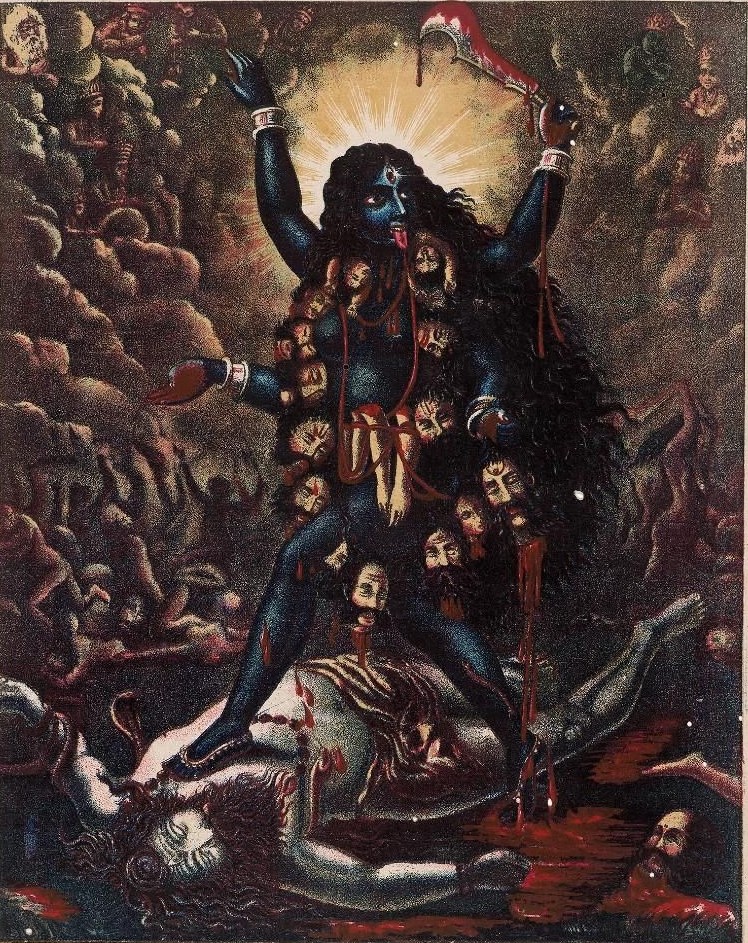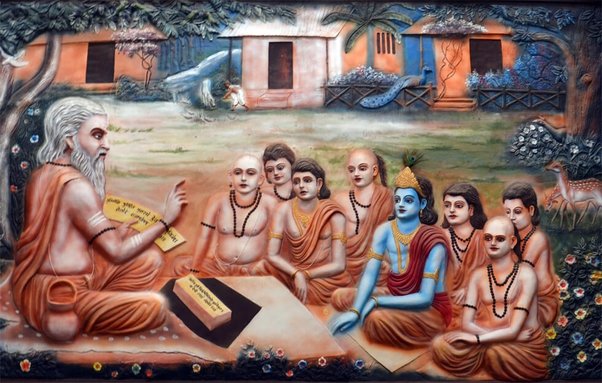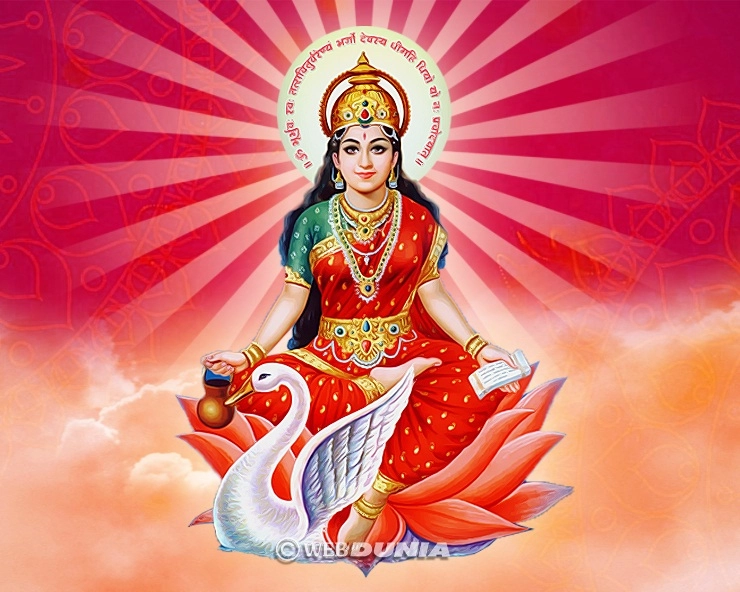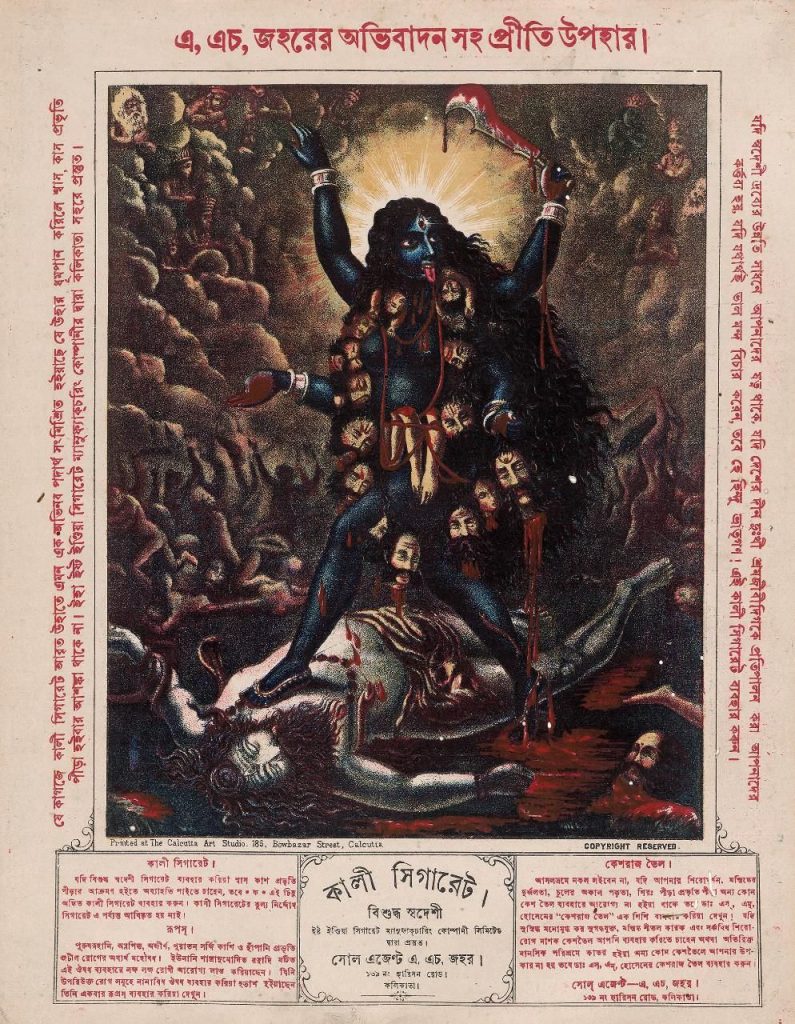All Forms Of The Divine Absolute, in all world mythologies, Signify An Ever-Existing Dimension And The Symbols, The Statues, Or The Pictures that we use to meditate on A Specific Form Of The Divine are tools to tap into that Dimension and learn energetically from that Dimension.
Maa Kaali Is One Of The Most Revered Forms Of The Divine Mother In Hinduism, particularly in the state of West Bengal, India. She Is A Powerful Symbol, Portrayed With A Fearsome Appearance – A Garland of skulls, and A Skirt made of severed arms. Maa Kaali’s Depiction reflects Her Strength And Power, Which Is Integral To Her Symbolism. She Is Also Revered As The Divine Mother Of time, change, and destruction.
For centuries spiritual seekers used The Symbolism Of Maa Kaali to tap Into Her Energy and learn From Her. Even during the colonial period, the West Bengal of India used these Symbolisms to create fear in the British rulers. Can we still use The Symbolism Of Maa Kaali now to transform ourselves?
Historical Significance of the worship Of Maa Kaali in Bengal
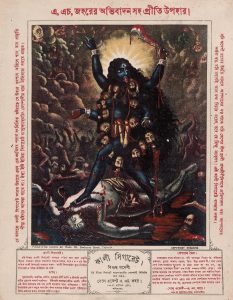
The worship Of Maa Kaali has been integral to Bengali culture and tradition for centuries. She Is Not Only worshipped As A Powerful Form Of The Divine Mother But Is Also Venerated A Symbol of strength, power, and revolution. In Bengal’s history, there have been numerous instances where The Symbolism Of Maa Kaali Has Played A Significant Role In Inspiring And Leading the masses towards freedom and liberation.
One of the earliest instances Of Maa Kaali’s Significance in Bengal’s history dates back to the 18th century, during the reign of Nawab Siraj-ud-Daula. According to historical accounts, Siraj-ud-Daula had a dream where he saw Maa Kaali, who warned him of the impending danger from the British East India Company. However, despite his efforts, he lost the battle, leading to British rule in Bengal for the next two centuries.
During the British rule, The Symbolism Of Maa Kaali became even more significant in Bengal’s history, particularly during the freedom struggle. Maa Kaali’s Depiction As A Fierce Warrior Form Of The Divine Mother, Who Is Not Afraid To Fight For what is right, Became A Source Of Inspiration For many freedom fighters. It is said that during the Indian Rebellion of 1857, the sepoys who rebelled against the British forces carried The Image Of Maa Kaali as a talisman to protect themselves in battle.
The Bengal Renaissance, which started in the late 19th century and continued well into the 20th century, also saw The Symbolism Of Maa Kaali being used as a tool for social and cultural reformation. Prominent figures of the Bengal Renaissance, such as Rabindranath Tagore and Bankim Chandra Chattopadhyay, used Maa Kaali’s Symbolism in their literary works to inspire people to fight against oppression and discrimination.
Overall, the historical significance Of Maa Kaali in Bengal is immense. From Being A Symbol of Resistance Against the British rule To Inspiring social and cultural reformation during the Bengal Renaissance, Maa Kaali’s Symbolism Has Played A Crucial Role In Shaping Bengal’s history and culture.
How Symbolism Works and How The Symbolism Of Maa Kaali Can Still Influence us to Create a New World?
Symbolism can be a powerful tool for personal and collective transformation. On an individual level, The Symbolism Of Maa Kaali can be used as a way to confront and transform aspects of the self that are holding us back. The Fierce And Destructive Aspects Of Maa Kaali’s Symbolism Can Help us to recognize and destroy our own limiting beliefs and behaviours, clearing the way for growth and transformation.
On a collective level, The Symbolism Of Maa Kaali can be used to challenge societal norms and structures that oppress and marginalize certain groups of people. Her Fierce Depiction And Emphasis On Strength And Self-Reliance Can Inspire marginalized communities to rise up and demand their rights and dignity.
Additionally, the destruction and creation cycle In Maa Kaali’s Symbolism can be applied to larger societal structures as well. By recognizing and destroying oppressive systems and ideologies, we can create space for new, more just, and equitable structures to emerge.
Overall, The Symbolism Of Maa Kaali Can Be A Powerful Catalyst For personal and collective transformation, Inspiring us to confront our own limitations and the limitations of the society we live in, and creating space for new growth and creation.
Conclusion
In conclusion, Maa Kaali Is A Complex And Multifaceted Divine Form In the Hindu mythology, Whose Symbolism has evolved over time to encompass a wide range of meanings. Her Fierce Depiction And Destructive Powers are often interpreted as a necessary means to an end, A Way to clear away the old and make way for the new. Maa Kaali’s Association With feminine power and independence challenges traditional gender roles and offers A Powerful Symbol Of resistance against oppression.
Despite Being Primarily Associated With Bengal, Maa Kaali’s Influence can be felt throughout India and beyond. Her Symbolism has been adapted and incorporated into a wide range of contexts, from contemporary art to feminist literature. Maa Kaali’s Teachings Continue To Inspire devotees to seek a deeper understanding Of The Self and the world, and to overcome the limitations of the ego.
References
- Sarkar, Sumit. “Calcutta and the Bengal Renaissance.” Calcutta: The Living City, edited by Sukanta Chaudhuri, vol. 1, Oxford University Press, 1990, pp. 67-99.
- Chaudhuri, Sukanta. “Calcutta and the Bengal Renaissance.” Calcutta: The Living City, edited by Sukanta Chaudhuri, vol. 1, Oxford University Press, 1990, pp. 100-135.
- Banerjee, Swapna. “The Goddess and Her Priests: Religion, Gender, and Power in Bengal.” Oxford University Press, 2003.
- Zimmer, Heinrich. Myths and Symbols in Indian Art and Civilization. Princeton University Press, 1972.
- McDermott, Rachel Fell and Jeffrey J. Kripal (eds). Encountering Kali: In the Margins, at the Center, in the West. University of California Press, 2003.
- McLean, Malcolm. Devoted to the Goddess: The Life and Work of Ramprasad. State University of New York Press, 1998.
- Kinsley, David. Hindu Goddesses: Visions of the Divine Feminine in the Hindu Religious Tradition. University of California Press, 1988.
- McDermott, Rachel Fell and Jeffrey J. Kripal. Encountering Kali: In the Margins, at the Center, in the West. University of California Press, 2005.
- Shankaranarayanan, S. Hindu Gods and Goddesses: In Japan. D.K. Printworld, 2003.
- Taussig, Michael T. “Culture of Terror, Space of Death: Roger Casement’s Putumayo Report and the Explanation of Torture.” Comparative Studies in Society and History, vol. 26, no. 3, 1984, pp. 467-497.

